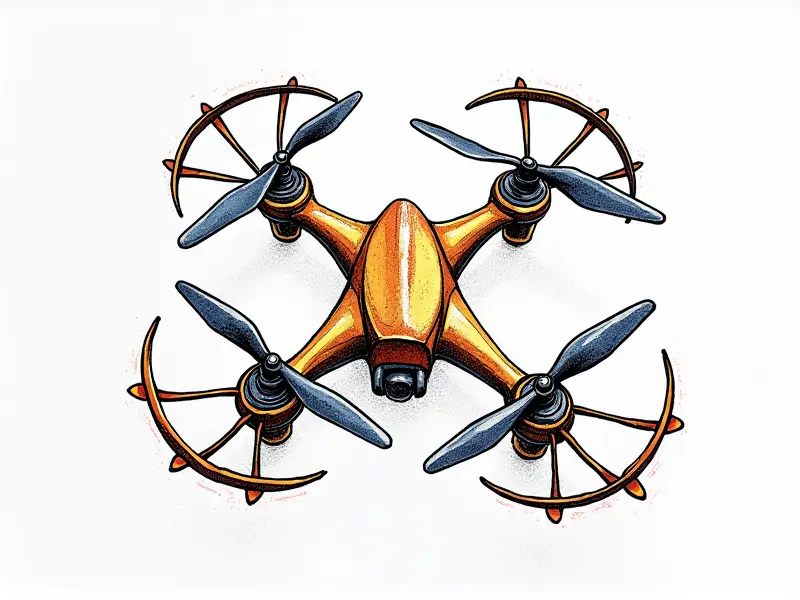FPV drone transmitter features

Essential Guide to Choosing the Right FPV Transmitter
When it comes to flying drones with first-person view (FPV), choosing the right transmitter is crucial. The quality of your flight experience hinges on selecting a transmitter that offers top-notch features and performance. This guide will walk you through essential considerations, must-have features, and cutting-edge technology in FPV drone transmitters.
Top Features in FPV Drone Transmitters
The best FPV transmitters come packed with features designed to enhance your flying experience. Key elements include:
- Transmission Range: The distance at which the signal remains strong and clear.
- Bandwidth: Determines how much data can be transmitted per second, affecting video quality.
- Frequency Band: 5.8GHz is commonly used for FPV due to its high bandwidth capacity.
- Antenna Type: Omnidirectional antennas offer all-around coverage while directional ones provide focused transmission.
Best FPV Transmitter Tech for Crystal Clear Video
To achieve crystal clear video, look for transmitters that support advanced technologies such as:
- MIMO (Multiple Input Multiple Output): Enhances signal strength and stability.
- Diversity Antennas: Use multiple antennas to reduce interference and improve reception quality.
- Error Correction: Reduces lag and ensures smoother video transmission.
Must-Have Features for FPV Racing Transmitters
Racing drones require specialized transmitters that can handle high-speed, low-latency communication. Important features include:
- Low Latency: Ensures real-time video transmission without delay.
- Built-in OSD (On-Screen Display): Provides critical flight data in the video feed.
- Lightweight Design: Minimizes weight for better performance and portability.
Key Features to Look for in an FPV Transmitter
In addition to basic features, consider these key attributes when selecting your transmitter:
- Battery Life: Ensure the transmitter has sufficient battery capacity for extended flights.
- User Interface: A user-friendly interface simplifies setup and operation.
- Compatibility: Check if it works with your drone model and receiver.
Why Channel Hopping is Crucial in FPV Transmitters
Channel hopping allows the transmitter to switch frequencies automatically, reducing interference from other devices. This feature ensures a stable connection even in crowded airspace:
- Avoids Interference: Switches channels when signals become weak or congested.
- Enhances Reliability: Provides a more consistent and reliable video feed during flights.
Innovations in FPV Drone Transmitter Technology Today
The latest advancements in FPV transmitter technology include:
- Built-in GPS: Tracks the drone's location for better situational awareness.
- Integrated Power Management: Optimizes power usage and extends battery life.
- Customizable Settings: Allows users to fine-tune performance according to their needs.
Advanced Features in Modern FPV Transmitters
Modern transmitters come with advanced features that push the boundaries of what's possible:
- Dual Band Operation: Supports simultaneous transmission on two frequency bands for redundancy and improved range.
- High Dynamic Range (HDR): Enhances video quality by capturing a wider range of light intensities.
- Advanced Error Correction Algorithms: Minimizes signal loss and ensures smooth, uninterrupted video transmission.
Critical Features for Optimal FPV Drone Performance
To achieve optimal performance in your FPV drone setup, prioritize these critical features:
- High Power Output: Ensures strong signal strength over long distances.
- Low Noise Amplifiers (LNAs): Enhances receiver sensitivity and reduces interference.
- Wide Frequency Range: Offers flexibility in choosing the best frequency for your environment.
Essential Specs for FPV Transmitter Buyers
When purchasing an FPV transmitter, pay attention to these essential specifications:
- Frequency Band (5.8GHz, 900MHz): Determines the range and quality of transmission.
- Transmission Power: Measured in dBm, indicates how far the signal can travel.
- Data Rate: Indicates the speed at which data is transmitted (e.g., 20 Mbps).
Must-Have Features in Your Next FPV Transmitter
To ensure you get the most out of your FPV drone flying, make sure your next transmitter includes these must-have features:
- Channel Hopping: Essential for maintaining a strong connection.
- Built-in Diversity Antennas: Improves signal quality and reliability.
- Integrated OSD (On-Screen Display): Provides real-time flight data directly in the video feed.
Conclusion
Selecting the right FPV transmitter is a critical decision that can significantly impact your drone flying experience. By focusing on essential features such as transmission range, bandwidth, and advanced technologies like MIMO and error correction, you can ensure crystal clear video quality and optimal performance. Additionally, considering specialized features for racing drones and innovations in modern transmitters will elevate your FPV capabilities to new heights.

